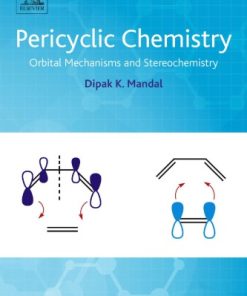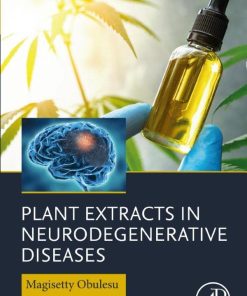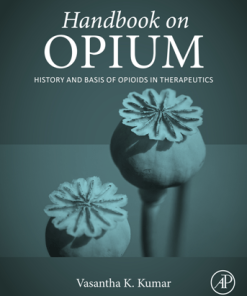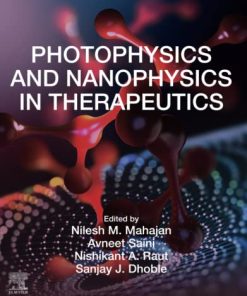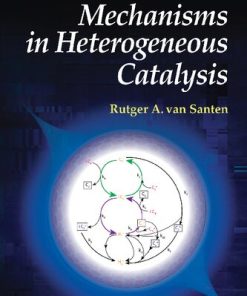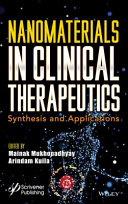(Ebook PDF) Biometals in neurodegenerative diseases mechanisms and therapeutics 1st edition by Anthony White, Michael Aschner, Lucio Costa, Ashley Bush 0128045639 9780128045633 full chapters
$50.00 Original price was: $50.00.$25.00Current price is: $25.00.
Biometals in neurodegenerative diseases: mechanisms and therapeutics 1st edition by Anthony R. White, Michael Aschner Lucio G. Costa, Ashley I. Bush – Ebook PDF Instant Download/DeliveryISBN: 0128045639, 9780128045633
Full dowload Biometals in neurodegenerative diseases: mechanisms and therapeutics 1st edition after payment.

Product details:
ISBN-10 : 0128045639
ISBN-13 : 9780128045633
Author: Anthony R. White, Michael Aschner, Lucio G. Costa, Ashley I. Bush
Biometals in Neurodegenerative Diseases: Mechanisms and Therapeutics is an authoritative and timely resource bringing together the major findings in the field for ease of access to those working in the field or with an interest in metals and their role in brain function, disease, and as therapeutic targets. Chapters cover metals in Alzheimer’s Disease, Parkinson’s Disease, Motor Neuron Disease, Autism and lysosomal storage disorders.
Biometals in neurodegenerative diseases: mechanisms and therapeutics 1st Table of contents:
Chapter 1: Biometals and Alzheimer’s Disease
Abstract
Introduction
The Role of Copper in AD
The Role of Zinc in AD
The Role of Iron in AD
Therapeutic Targeting of Biometals in AD
Conclusions
Chapter 2: Copper in Alzheimer’s Disease
Abstract
Introduction
The Physiology of Copper
Copper Toxicity
Conclusions
Chapter 3: The Role of Selenium in Neurodegenerative Diseases
Abstract
Introduction
Selenoproteins and the Selenoproteome
Selenium and Alzheimer’s Disease
Parkinson’s Disease
Other Neurodegenerative Diseases
Conclusions
Chapter 4: Does HFE Genotype Impact Macrophage Phenotype in Disease Process and Therapeutic Response?
Abstract
Iron
Hemochromatosis
HFE
Macrophages
HFE Animal Models
Conclusions
Chapter 5: Chemical Elements and Oxidative Status in Neuroinflammation
Abstract
Introduction
Metal-Induced Neurotoxicity and Multiple Sclerosis
Metals and Oxidative Status in Multiple Sclerosis
Metals and Oxidative Status in Clinically Isolated Syndromes
Conclusions
Chapter 6: Metals and Neuroinflammation
Abstract
Introduction
Mechanisms by Which Metal Elements Can Incite Immune Activity
The Relation Between Reactive Oxygen and Nitrogen Species and Inflammation
Conclusions
Chapter 7: Metals and Prions: Twenty Years of Mining the Awe
Abstract
Prion Diseases
Prion Protein
Prion Protein Function
Copper and PrP
Zinc and PrP
Iron and PrP
Manganese and PrP
Metals in Prion Disease
Chelation Therapy and Prion Disease
Conclusions
Chapter 8: Manganese and Neurodegeneration
Abstract
Background
Mn Essentiality and Metabolic Functions
Mn Biokinetics and Homeostatic Control
Neurotoxicology of Mn
Biomonitoring of Mn in Patients Undergoing PN
Conclusions
Acknowledgment
Chapter 9: Zinc in Autism
Abstract
Introduction
Zinc Signaling in Autism
Therapeutic Strategies in Autism Based on Biometals
Conclusions
Chapter 10: Metals and Motor Neuron Disease
Abstract
List of Abbreviations
Introduction
Metal Exposure
Metals in ALS Cerebrospinal Fluid
Metals in ALS
Protection by Metallothionein
Metal Distribution in ALS
Genetic Aspects
Concluding Remarks
Chapter 11: Metals and Lysosomal Storage Disorders
Abstract
Introduction
Common Pathological Features of Lysosomal Storage Disorders
Description of Most Common Neurodegenerative LSDs Associated with Biometal Imbalance
Function and Regulation of Biometals
Role of Biometals and Biometal Binding Proteins in LSDs
Targeting Metals to Treat Disease
Chapter 12: Developmental Exposure to Metals and its Contribution to Age-Related Neurodegeneration
Abstract
Introduction
Developmental Exposure to Toxicants and Late Effects
Developmental Lead Exposure and Alzheimer’s Disease
Developmental Arsenic Exposure and Alzheimer’s Disease
Conclusions and Future Perspectives
Acknowledgment
Chapter 13: Metal Biology Associated with Huntington’s Disease
Abstract
Introduction
The Epidemiology of HD
The Symptoms of HD
The Neuropathology of HD
Biological Function of Wild-type and Pathogenic HTT Proteins
Autophagy and Metals in Huntington’s Disease
Exosomes and Metal in Huntington’s Disease
Environmental Factors Impacting HD
Metals in HD
Iron in HD
Copper in HD
Calcium in HD
Manganese in HD
Manganese Deposition: Brain Regions, Cell Types, and Cellular Organelles
Manganese Dyshomeostasis in HD
Mn-Dependent and Mn-Utilizing Enzymes
Intracellular pH and Metal Biology in HD
Metal-Related Clinical Interventions in HD
Conclusions and Future Directions
Chapter 14: Metal-Binding to Amyloid-β Peptide: Coordination, Aggregation, and Reactive Oxygen Species Production
Abstract
Introduction
Structure of the Metal-Aβ Complexes
Affinity of Metals to Aβ
Aggregation
Reactive Oxygen Species Induced Oxidative Stress
Conclusions
Acknowledgments
Chapter 15: Metals and Mitochondria in Neurodegeneration
Abstract
Introduction
Iron Dyshomeostasis
Copper Dislocation
Zinc Deficiency
Mitochondrial Dysfunction
Conclusions
Acknowledgments
Chapter 16: Metal Transporters in Neurodegeneration
Abstract
Iron Transporters and Neurodegeneration
Zinc Transporters and Neurodegeneration
Copper Transporters and Neurodegeneration
Manganese Transporters and Neurodegeneration
Magnesium Transporters and Neurodegeneration
Aluminum Transporters and Neurodegeneration
Conclusions
Chapter 17: Metal Imaging in the Brain
Abstract
Introduction
Introduction to MRI Physics
MRI Contrast Agents
Gadolinium
Iron
Copper
Manganese
Chapter 18: Metalloregulation of Protein Clearance: New Therapeutic Avenues for Neurodegenerative Diseases
Abstract
Introduction
Metalloregulation of the Ubiquitin Proteasome System: Implication in Neurodegenerative Diseases
Metals as Mediators of Autophagy-Lysosomal Response
Conclusions
Acknowledgments
Chapter 19: Metals and Autophagy in Neurotoxicity
Abstract
Introduction
Part 1 Metal-Related Neurotoxicity and Neurodegenerative Diseases
Part 2 Autophagy in Metal Neurotoxicity
Conclusions
Acknowledgments
Chapter 20: An Overview of Multifunctional Metal Chelators as Potential Treatments for Neurodegenerative Diseases
Abstract
Introduction
Parent Metal Chelators
Multifunctional Metal Chelators
Conclusions
Chapter 21: Abnormal Function of Metalloproteins Underlies Most Neurodegenerative Diseases
Abstract
Background
Biometals
Abnormal Biometal Levels and Distribution Underlie Most Forms of Neurodegeneration
Abnormal Metalloprotein Function Underlying Neurodegenerative Diseases
Neurodegenerative Diseases Caused by Mutation in Metalloproteins
Neurodegenerative Diseases Associated With Abnormal Metalloprotein Function
Neurodegenerative Diseases Involving Biometal Changes but Without a Clearly Identified Role for Metalloprotein Abnormities
Neurodegenerative Diseases Where No Major Role for Biometals or Metalloproteins Has Yet Been Identif
People also search for Biometals in neurodegenerative diseases: mechanisms and therapeutics 1st:
biometals megaman
biometals
neurodegeneration in alzheimer’s disease
biomaterials metals
alzheimer’s biology
You may also like…
Engineering
Reaction Mechanisms in Environmental Engineering. Analysis and Prediction James G. Speight
Engineering
Photonanotechnology for Therapeutics and Imaging 1st Edition by Choi 0128178416 9780128178416
Medicine - Pharmacology
Business & Economics
Engineering - Bioengineering
Nanomaterials in Clinical Therapeutics. Synthesis and Applications 1st Edition Mainak Mukhopadhyay





